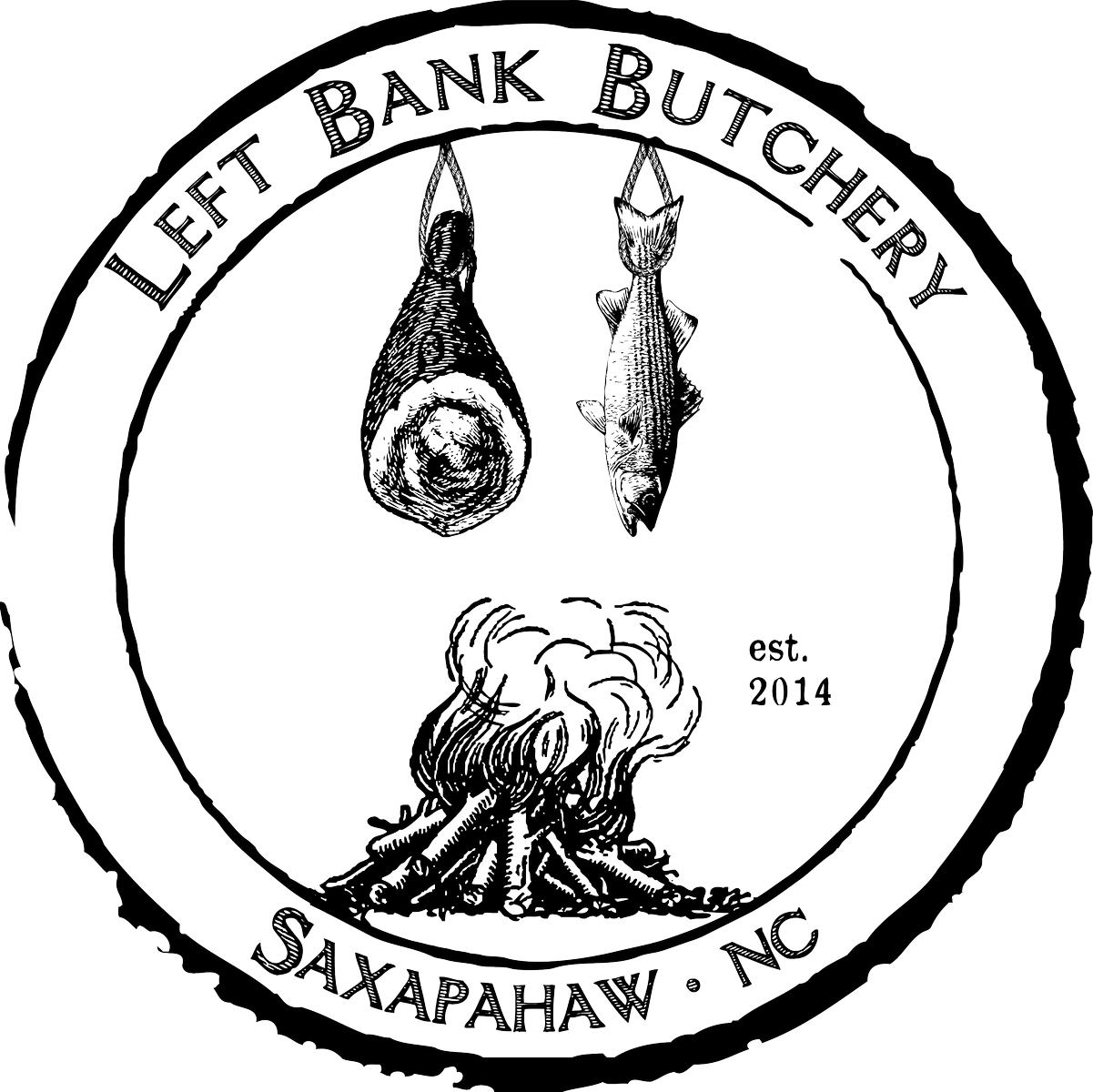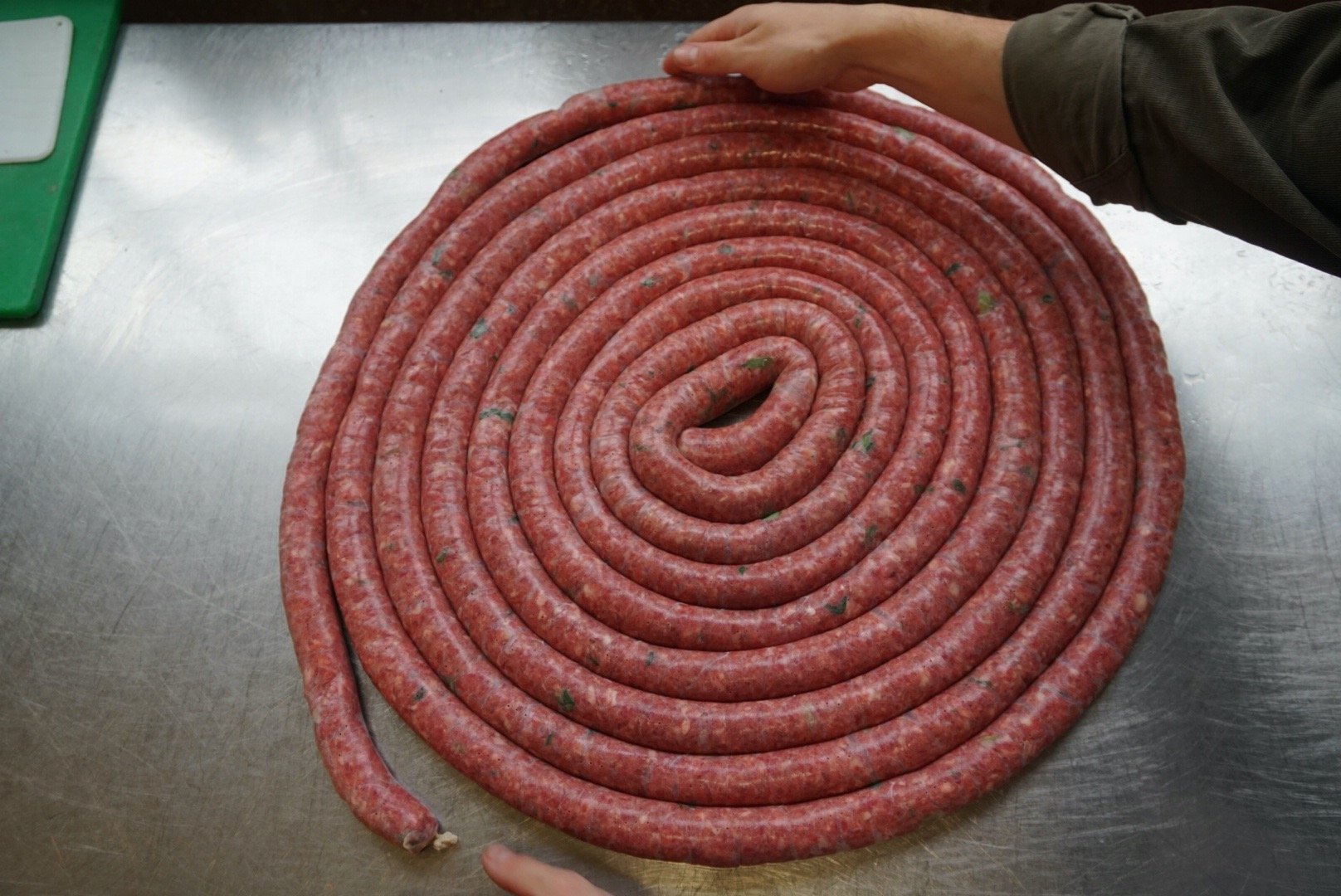THE MENU
Pork Chops
Ribeye Chop
bone-in chop with part of the pork belly—a staff favorite
Center Cut Chop
your classic bone-in pork chop
Porterhouse Chop
bone-in chop with loin and tenderloin
Coppa Chop
boneless pork chop from the tender part of the boston butt. Wonderful marbling.
Cold Smoked Sirloin Chops
boneless pork chops with a light smoking. Cook like a normal pork chop.
Porchetta Marinated Center-Chop
Center-cut chop with fresh rosemary, lemon zest, olive oil, toasted fennel, red pepper
Lemongrass Ginger Shoulder Chops
shoulder chops marinated w/ fresh lemongrass and ginger
Pork Sirloin Chops (boneless)
a delicious, boneless alternative to our standard chops
Larger Roasts
Boston Butt
well-marbled portion of the upper shoulder.
Pork Ribeye Roast
bone-in, top portion of the loin. Ready to roast and cut into individual chops.
Pork Loin Roast
Coppa Roast
well-marbled boneless roast. This one wins every time.
Traditional Porchetta
a singular piece of pork with the scored skin-on belly wrapped around the loin, seasoned with rosemary, lemon zest, garlic, spices and ready to roast (and impress).
Picnic Shoulder
lower part of the shoulder, great choice if you’d like a skin-on roast.
Pork Sirloin Roast
beautiful and thrifty roast
Smaller Cuts
Pork Tenderloin
Secreto
a well-marbled thinner steak from the shoulder.
Pork Cheeks
Spare Ribs
Pork Shank
Ground Pork
Pork Belly
Thin-sliced Pork Belly
thinner for hotpot, or thicker for KBBQ
Dry-brined Pork Shank
with orange zest, garlic and rosemary
Ramen-Ready Pork Belly
pork belly slab braised in soy, stock and spices, then glazed. Ready to be sliced and pan fried for your next bowl of ramen (see ramen stock under our frozen offerings).
And any other part of the pig you need!
Steaks
Ribeye (Bone-in or out)
New York Strip (Bone-in)
Filet Mignon
Flat Iron
Ranch
Denver
Chuck Eye
Vegas Strip
Top Round Steak / London Broil
Merlot
Cube Steak
Sirloin Filet
Petite Tender (teres major)
Top Sirloin
Skirt Steak- inside or outside
Flank
Bavette
Larger Roasts and Braising Cuts
Standing Rib Roast
bone-in prime rib
Prime Rib, Boneless
Picanha (Coulotte)
Roast or grill whole, or we can cut into steaks. Popular in Brazilian steakhouses, but trust us, you can do it on your own!
Tri-Tip
not just for Californians anymore! A wonderful cut for the grill
Sirloin Filet
~2lb roast. Cooks like a filet mignon but saves you some money, and has wonderful flavor.
Bone-in or Boneless Short Ribs
Beef Osso Bucco
Chuck Roast
Brisket
tell us what you’re doing and we’ll have them ready for smoking, braising, or brining!
And any other roast you can think of!
Other Cuts
Assorted Kebab
Ground Beef
Stir Fry Beef
Beef Hot Pot
Kalbi Short Ribs
Korean-style short ribs—ready for the grill
Marrow Butter Slab
roasted marrow mixed with butter and herbs, ready for topping a steak or bread
Bacon burgers
Brisket Burgers
Marrow Bones
canoe-cut
LAMB
Leg
bone-in or boneless
Shoulder
bone-in or boneless
Shanks
Porterhouse Chops
English-style Chops
Rack of Lamb
Lamb Coppa Roast
Shoulder Rack
Sirloin Roast
Belly/Ribs
Neck
We make 2-3 kinds of fresh sausage each week, and many more types in our freezer. Below is a sample.
SAUSAGE
Toulouse Sausage
fresh thyme and parsley, lemon zest, garlic and white wine
Forager Sausage
with Haw River Mushrooms’ oyster mushrooms
Breakfast Sausage
fresh sage and a little heat
Breakfast Sausage for the Kiddos
no heat, fresh sage, maple syrup
Italian Sausage
Hot Honey Sausage
w/ local honey from King Cobra Apiary
Tienda Style Chorizo
Chilean Longaniza
Thai Sausage
lemongrass, jalapeno, coconut milk, cilantro, lime juice & zest
Chorizo Verde
jalapeños, poblanos, onion, garlic, cilantro, pepitas & spinach
Mexican Chorizo
Argentinian Chorizo
Cajun Boudin
cooked sausage w/ pork, pork liver, cooked rice, scallions, & spices
Savory Sausage
rosemary, marjoram, Madeira wine, parmesan
South Carolina Onion Sausage
Charred Scallion and Bacon Sausage
Chaurice Sausage
Blueberry Sausage
Bacon Bratwurst
Bratwurst
Rosemary Fontina Sausage
Merguez
lamb and beef sausage from North Africa and France
Boerewors
South African beef sausage
Bacons
Black Pepper Bacon
Molasses Bacon
British Rashers
Pork Sirloin Bacon
Beef Bacon
Canadian Bacon
Lunch Meats
Hot Capicola
Smoked Molasses Ham
Herbes de Provence Ham
Roast Beef
Pastrami
Salami Cotto
Smoked Sausages
Smoked Kielbasa
Andouille Sausage
Smoked Chorizo
Kasekreiner
Weisswurst
Hot Dogs
Terrines & Pates
Chicken Liver Mousse
Country Pate
Head Cheese
Braunschweiger
Rillettes
Various Terrines
Seasoning Meats
Cajun Tasso Ham
Guanciale
Nduja
Smoked Hocks
Duck Confit
Spreads
Pimento Cheese
original or bacon, smoked jalapano & charred onion flavor
Bluefish Pate
PREPARED MEATS, SOUPS, MORE
Stocks
Rich Meat Stock
mixed stock with roasted mirepoix and tomato.
Pork Stock
Beef Stock
Chicken Stock
Demi-Glace Bouillon Cubes
Rendered Lard
Rendered Tallow
Easy Options from the Freezer
Carnitas
Pork confited with onions and oranges, capped with fat for you to fry up your carnitas in!
Frijoles Puercos
tastiest refried beans. So good. Not gonna lie, they have a fair amount of lard in them...
Pork Schnitzel
tenderized pork loin cutlet w/ panko, egg & flour.
Beef Bolognese
Traditional style, heavy on meat and not tomatoes
Chorizo Queso Dip
Moroccan Meatballs
Lamb & beef w/ homemade harissa, panko, lemon & spices
Italian Meatballs
Beef & pork meatballs w/ garlic, onion, parsley, egg, parmesan, panko & spices
Birria
Beef braised with guajillo chile, tomato, cumin, garlic, pork broth
Enchiladas con Carne
corn tortillas filled with spiced beef in a rich tomato and chili sauce, topped with sauce and cheese.
Soups
Ramen Broth
Roasted pork stock base, bacon, kombu, mushroom, soy sauce, mirin.
French Onion Soup
Roasted beef & pork w/ fresh herbs & caramelized onions
Ham & Bean Soup
diced ham, carrot, celery, onion and navy beans in rich pork stock.
Pozole
pork shoulder & pork stock w/ hominy, garlic, onion, ancho chili & chipotle peppers
For the Dogs
Dehydrated Liver Treats
Dog Food
Smoked Pork Skins
POULTRY
Whole Chickens and Parts
Little Way Farm
Poulet Rouge Chickens
Joyce Farms
Chicken parts
Joyce Farms
Duck
Joyce Farms
Cornish Hen
Joyce Farms
Guinea Fowl
Joyce Farms
Turkeys
Thanksgiving time. Joyce Farms.
Whole Rabbit
Brittany Ridge Farm, NC
SEAFOOD
Shrimp
Locals Seafood, Raleigh
Scallops
Locals Seafood, Raleigh
Fish Filets
Locals Seafood, Raleigh
Sixty South Salmon
Wild Alaskan Salmon
Calamari
from California







